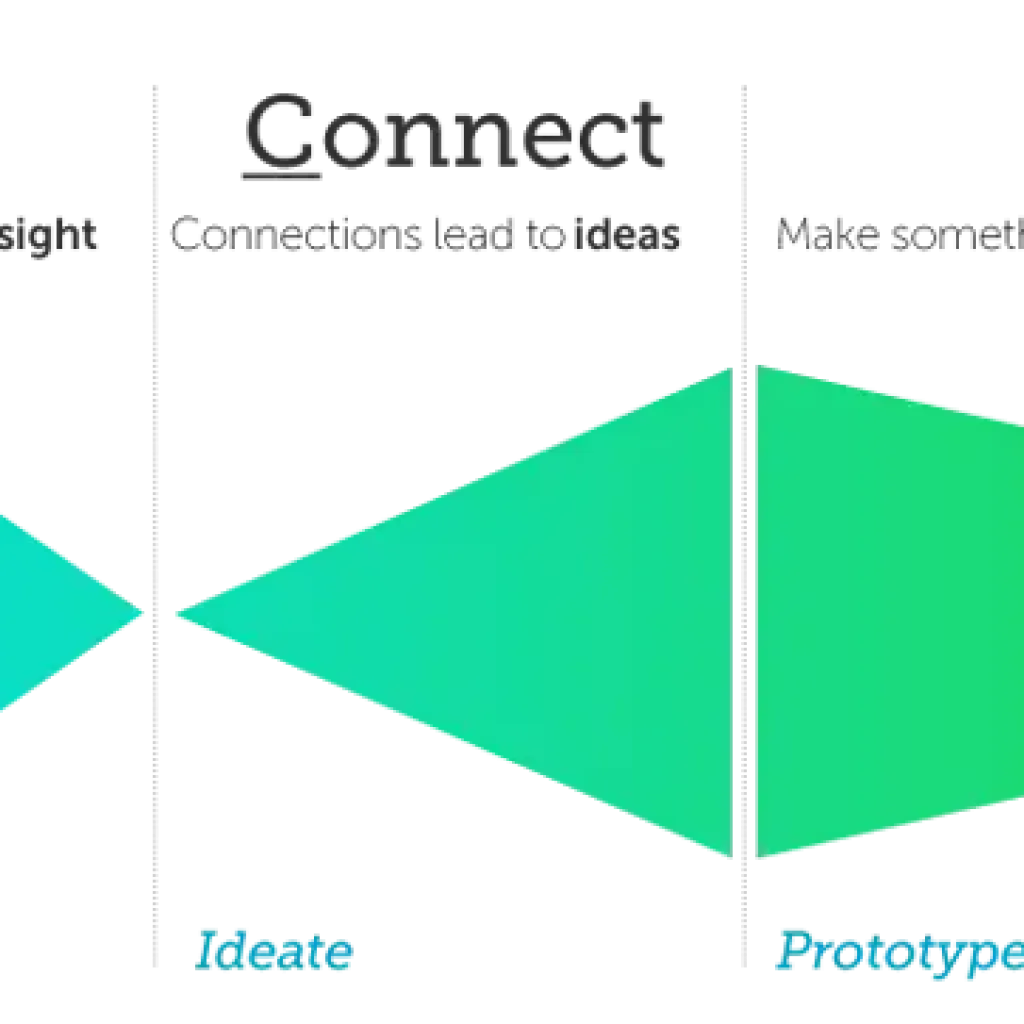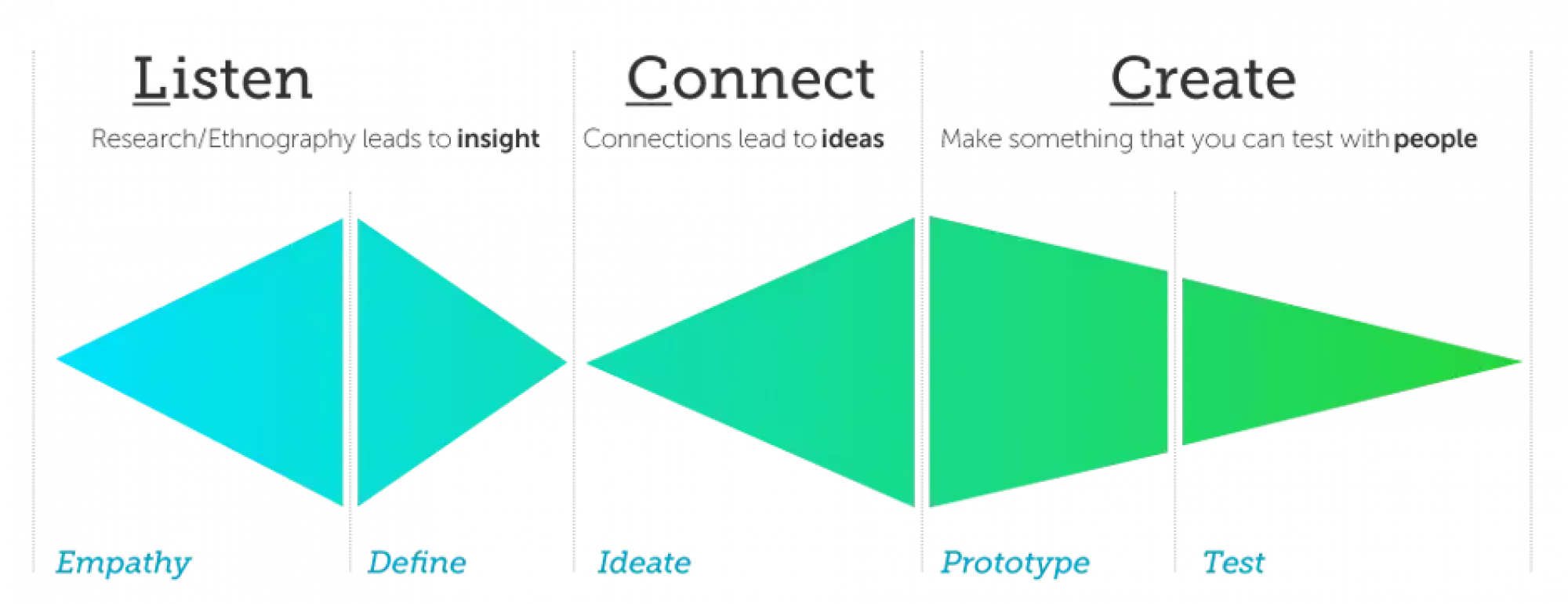
The leadership leverage points in a design and innovation system
I predict that a large number of design and innovation projects will start in 2023. And that a large percentage of them will not lead to significant change or any change at all. Just like it was in 2022, 2021, 2020, 2019 etc. I predict people will point fingers: Design thinking is dead! Innovation is overrated! Understanding and empathy are frivolous luxuries!
[YAWN] Same as always. I would like to see something different in 2023, and beyond, and it has nothing to do with the design thinking process or customer-centricity or innovation. It has everything to do with the specific place of leadership in the process.
The design thinking process has some critical weak points — in most cases of failed initiatives it is these weak points that lead to project failure. But it is not in the design thinking process itself but rather at its transition points.
Here’s a simplified picture of the design process:

The first weak point in the system is, as expected, in the beginning, before any design happens. Why is that? One thing that stands out in many, if not most, design and innovation projects that I’ve been involved in, is that the staff doing the design work is not completely convinced that top leadership has their backs. They probably have heard lots of words about the need for innovation and seen a number of inspirational talks, from leaders and consultants, about the need to innovate. What they typically have not seen is leadership put their money, that is their leadership credibility, where their mouths are. They have not experienced that leadership has skin in the game to convince them that they should put their own skin in the game. How could leadership show that they are serious about the innovation and design process to convince others to follow?
For one, leaders need to create a compelling repeatable story about innovation and how it relates to the future success of the organization. An innovation or design vision. Once they’ve created and shared that story, leaders need to make sure that the next two to three levels of leadership below them can share and repeat the same story. You might call this a new oral history of the future of the organization. It must be a good story; people must see themselves as part of the story; and like all oral histories it must be easy for other people to re-tell. Let’s face it, this type of strategic storytelling mostly happens in great organizations, not in the 80% of the rest of us. Not committing to this, in my mind, is proof of lazy leadership.
For another, leaders need to be somewhat (or very) clear about the consequences of NOT buying into the story. Because people need to know that participation isn’t optional. This isn’t to say that everything needs to be heavy-handed and hierarchical — people need to figure out how they fit into this story. But if they find out that they don’t fit, or don’t want to fit, that’s okay too. Great organizations try to make sure that every employee is in their right place, even if that’s in another organization. It’s also a good way to check to make sure the future story is relevant — if everyone is opting out then there is probably a deeper problem brewing in the organization.
So, the beginning is a leadership leverage point in an innovation system: people need to know it’s worth their while to dare to design and innovate.
The next leverage point is the interface between the initial innovation and design work as it integrates into a real project, usually with a new team who was probably not very involved in the earlier work. What we see, again and again, is a resistance to implementing something new and different originating from another part of the organization. Managers and employees will act as friction to slow down or even eliminate these new initiatives if leadership doesn’t get involved and spends some political capital. At this leverage point key leaders need to be active in the interface between the two processes. Particularly leaders need to stress that the active backlog isn’t used as a sledgehammer to kneecap innovation and design projects. They need to repeat their vision but also remind people of the need for innovation and consequences of ignoring it.
This leverage point might deliver the greatest results, based on feedback we’ve received over the years. And yet it’s a place where most leaders seldom show up — they defer to the managers who often have little incentive to push forward.
So, the second leverage point is in-between the innovation and design leverage point and integrating it into production.
The last leverage point is at the end, when the new initiative has met it’s target stakeholder group as part of the organization’s services or products. Leaders need to have a realistic measurement system in place to see how well the initiative has succeeded or if it has failed. Leaders also need to implement ongoing post-mortem assessments to amplify successful practices and to change faulty ones. And then they need to share these assessments with the whole organization — to celebrate successes and failures as well as tying these back to the future vision story. They also need to act upon the results to help the people in their organizations succeed more and more, rather than simply ignore or punish people who didn’t live up to the vision.
Leadership leverage points in the innovation and design system may mean more to the success or failure of new initiatives than the brilliant insights and ideas created by energized employees. Because nothing kills energy and passion like passive or innovation-washing leaders.
In 2023, let’s help leaders succeed more by helping them to maximize the key leverage points in their innovation and design initiatives.